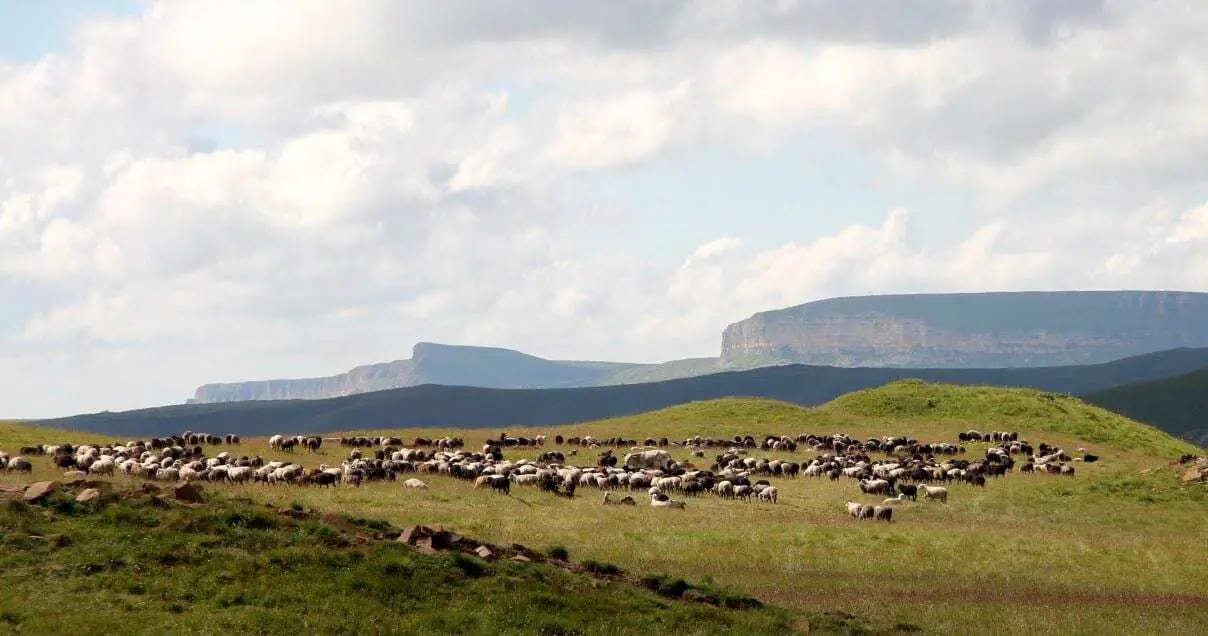Bronze Age pastoralists in what is now southern Russia apparently covered shorter distances than previously thought.
It is believed that the Indo-European languages may have originated from this region, and these findings raise new questions about how technical and agricultural innovations spread to Europe. An international research team, with the participation of the University of Basel, has published a paper on this topic.
During the Bronze Age (ca. 3900 – 1000 BCE), herders and their families moved across the slopes of the Caucasus and the steppes to the north, taking their sheep, goats and cattle with them. It is believed that the Indo-Germanic groups, who brought the Indo-European languages and technical innovations such as wagons, domestic horses and metal weapons to Europe, may have originated from this region.
Until now, experts assumed that this transfer of technology was based on the long-distance migrations and trade contacts of these mobile pastoral communities, and that this mobility connected the Middle East with Europe. An international research team, with the participation of the University of Basel, has now questioned whether these communities did actually travel over such long distances. They published their study in the journal Plos One.
Nutrition reveals low levels of mobility
The researchers reconstructed the diet of the Bronze Age pastoral societies in order to draw conclusions about their migration. Their analysis was based on skeletal remains from burial mounds and flat grave cemeteries on the plateaus of the Caucasus and the steppes bordering to the north. “These human bones and teeth are archaeological treasures,” says the study’s author Professor Kurt Alt, visiting professor at the University of Basel and professor at Danube Private University in Krems. “They are fundamental resources for gaining a deeper understanding of economic strategies, the mobility patterns associated with them and social differentiation.”
The research team analyzed the isotopic composition of carbon and nitrogen in bone collagen from the skeletal remains of 150 people, taken from eight sites. The finds date back to a period from about 5000 to about 500 BCE. In addition, the scientists compared this data with the isotope ratios in the bone collagen of 50 animals, as well as with the local vegetation of that time. The isotope ratios in bone collagen reflect the isotope ratios in the main foodstuffs that a person eats.
As it turns out, the diets of these groups were mainly based on the foodstuffs within the landscapes where their remains were found. “The communities apparently remained within their respective ecological areas and did not switch between the steppes, forest steppes or higher regions,” explains Sandra Pichler from the Department of Environmental Sciences at the University of Basel, co-author of the study. According to the isotope analysis, meat, milk and dairy products formed a large part of these individuals’ basic diets, but they were supplemented by wild plants, too. It was not until the end of the Bronze Age that their diets began to be based more on cultivated cereals, with millet presumably the main crop in this regard.
Technology transfer by word of mouth
“This study’s findings imply that Caucasian communities were not highly mobile and did not undertake large-scale migrations, suggesting that the revolutionary technical innovations of the 4th and 3rd millennium BCE, such as wagons or metal weapons, were transmitted in other ways.”
If the pastoral communities of the time only moved across shorter distances, technologies could have been passed on from one group to the next transmitting the knowledge of metal weapons, the processing of bronze and the domestication of horses into Europe by word of mouth.
Header Image Credit : Sabine Reinhold





